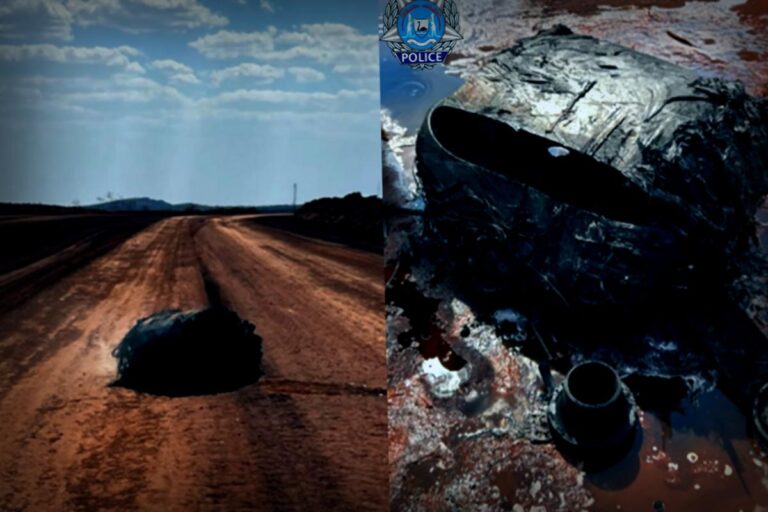On Wednesday morning, a robust Falcon 9 rocket from SpaceX took off into the blue sky from Vandenberg Space Force Base in California.
Exciting Launch from Vandenberg Space Force Base
This launch was especially significant as it marked the kickoff of NASA’s latest mission, known as TRACERS, which stands for Tandem Reconnection and Cusp Electrodynamics Reconnaissance Satellites. The rocket lifted off right at 11:13 a.m., which is yet another impressive achievement for space exploration.
The aim of the TRACERS mission is to gain insights into how solar wind influences Earth’s magnetic field. Solar wind refers to the constant stream of charged particles that the Sun ejects, traveling through space before sometimes reaching our planet. When these particles encounter Earth, they can alter the magnetic field surrounding our world.
To carry out this research, TRACERS consists of two satellites that will fly in unison through a part of Earth’s magnetic field known as the “cusp,” the area often encountered by solar wind particles as they penetrate into our atmosphere. These spacecraft will gather data about electric and magnetic fields in this area, contributing to our understanding of this crucial yet often overlooked aspect of space dynamics.
India roars as Falcon 9 takes Shubhanshu Shukla to space!
After a smooth liftoff, the Falcon 9 passed a key moment called Max Q, which is when the rocket experiences peak stress from the atmosphere. Following this, the first stage engine was turned off, and the first and second stages of the rocket separated. An hour post-launch, the TRACERS satellites successfully launched into orbit, ready to commence their missions in space.
NASA Sends Four Missions in One Launch
The TRACERS duo wasn’t alone on this voyage; they were accompanied by three additional NASA-funded payloads, each with different roles while orbiting Earth.
One of these is the Athena EPIC SmallSat, designed to test new methods for launching remote-sensing tools into orbit. These tools enable scientists to study our planet from above, and finding faster and cheaper methods for these launches could be a game-changer for future explorations.
Check out NASA’s 5th Biennial Exercise tackling Asteroid threats.
Next up is the Polylingual Experimental Terminal, or PExT, which functions as a smart communication device. Its main task is to show that space missions can seamlessly switch between different communication networks, just like how our cell phones connect to varying service providers depending on our location. This could ensure that missions stay linked, regardless of where they are in space.
Last but not least is the Relativistic Electron Atmospheric Loss, or REAL CubeSat. It will examine high-energy particles in Earth’s radiation belts, which can occasionally penetrate the atmosphere, posing risks to satellites and astronauts. By scrutinizing these particles, scientists aim to deepen their understanding of their behaviors and improve protection for vital technologies in space. Notably, this launch marked the inaugural deployment of a CubeSat from New Hampshire through NASA’s program.
All four satellites were part of the CubeSat Launch Initiative, aimed at facilitating the journey of small scientific payloads into space, opening doors for many regions and research institutions across the country to partake in space science.
A Key Mission for Space Weather Research
When we talk about space weather, we’re not referring to sunny days or rainy skies. Instead, we’re looking at solar storms, energetic particles, and magnetic fields all occurring miles above us but capable of disrupting technology we rely on, including satellites, GPS systems, radio communications, and even power grids.
The TRACERS satellites will monitor these space weather phenomena as they navigate through specific regions of Earth’s magnetic field, which serves to protect our planet from harmful solar particles. However, during bouts of intense solar activity, this protection can falter, leading to potential issues.
The instruments on board TRACERS will track adjustments in electric and magnetic fields while the spacecraft venture through space. This information is crucial for scientists to better grasp how solar energy interacts with Earth’s environment. By predicting when these changes might occur, we can improve our responses to space weather risks.
Could Neutron’s launch be Rocket Lab’s biggest risk? Can it keep pace with Falcon 9?
The TRACERS mission was organized under NASA’s Heliophysics Explorers Program, which centers on understanding the Sun and its effects across the solar system. Collaborating with various research entities, NASA ensured that TRACERS is equipped to collect invaluable data.
With each mission launch, NASA bolsters efforts that safeguard our satellites, enhance communications, and unravel the complexities of the space environment enfolding our planet. Every piece of data IB obtained from TRACERS and its accompanying satellites draws us closer to solving the mysteries of space weather that impacts us all.
The post 🚀 Falcon 9 Launches NASA’s TRACERS Mission to Track Invisible Solar Storms appeared first on Spacetechtimes.




















